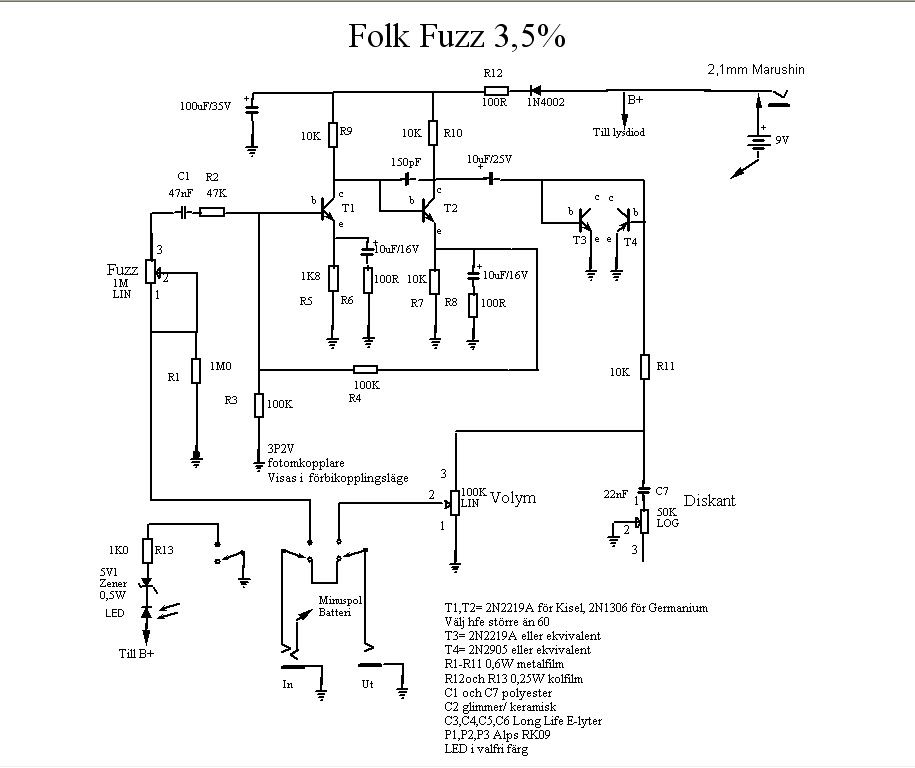I'll let people with more experience answer the biasing questions, and I think that Bjorn has a comment or two in the modifications thread about a change or two for Ge transistors. For what its worth, I dropped some PNP's in while I had the circuit breadboarded and didn't adjust the biasing. I'm not sure if thats Bjorn designing an adaptable circuit that takes lots of transistors, or just a lucky pick with the PNP's I used.
I would think that you would only need to replace T1 and T2 with the OC76's. I'm pretty sure that T3 and T4 are using the transister as a diode to ground to clip the signal, and so there should be less (if any) advantage from using a Ge transistor.
To switch the circuit to PNP, you need to switch the polarity of the battery, and any polarized components (electrolytic capacitors, diodes, LED's). So, any of the capactors in that schematic with a plus sign (or one curved line) should be switched (100uf up top by the power supply, the two 10uF's off the emitter of T1 and T2, and the 10uF after T2). The 5.1V zener, LED, and 1N4002 would need to point in the other direction. There might be other ways to do this, but that's the easiest and the only one that I've done and can comment on. (it means that the pedal won't work on a daisy chain with other -ve ground effects though)
So, if you look at the great build photo tutorial, at step 3, D1 needs to be reversed. D2/3 and LED2/3 can stay the same way they already were since they're in pairs to the ground anyway. At step 6, the electrolytic capacitors need to be installed backwards. Step seven will be different for your particular transistors. Like it says, you'll have to look at the datasheet or somehow find which leg is the emitter, base, and collector. I
think thats all for components, but the off board wiring will need to change a bit too.
With PNP's, i think that its easiest to use a positive ground, so the V+ connection on the PCB will connect to the -ve, and the Ground connection will connect to the +ve from the power supply. (I'm not sure if this helps you, but I always take a look at the General guitar gadgets PNP fuzzface to help with the wiring and schematics for +ve ground effects... the pictures of the components helps me get it sorted out).
http://www.generalguitargadgets.com/pdf/ggg_ff5_lo_pnp.pdfGood luck! If I've managed jumbled anything up or left something out, someone with more experence should be abe to correct me pretty easily.

